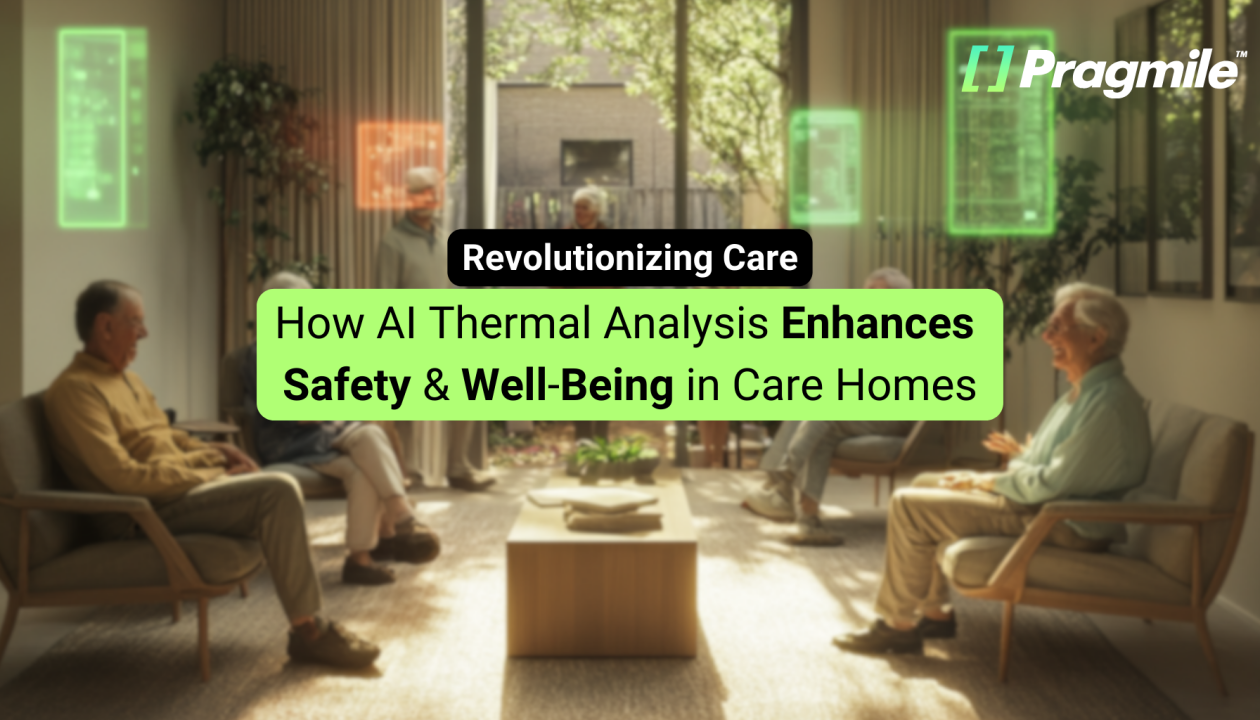
Date published: July 31, 2024
Leveraging AI Thermal Analysis to Enhance Safety and Infection Control in Care Facilities
Not long ago, I found myself chatting with a group of friends about the challenges facing our elderly loved ones in care homes. The conversation took a somber turn as we discussed the high rates of falls, infections, and wandering incidents that plague these facilities. It was clear that maintaining the safety and well-being of residents in care facilities is no small feat. But what if advanced technology could offer a transformative solution? In this article, we will be looking at what I believe to be the closest we can get to the perfect solution which does not limit residents’ freedom of movement nor violates their privacy in any way.
Understanding the Challenges in Care Facilities
Care facilities, especially those housing the elderly, are rife with challenges. Falls are alarmingly common; statistics show that care home residents are three times more likely to fall than their counterparts living in the community, with about 60% of residents experiencing at least one fall annually. Infections, too, are a significant concern. During the COVID-19 pandemic, care homes were hotspots for outbreaks, highlighting the critical need for effective infection control measures. Additionally, wandering behaviors among dementia patients and security breaches further complicate the safety landscape.
The Role of AI-Powered Thermal Analysis
So, how can AI-powered thermal analysis make a difference? Pragmile’s Infrasenses technology leverages thermal imaging and AI to provide real-time surveillance and early detection of issues such as fever and falls. This technology goes beyond traditional monitoring by integrating digital wellness boundaries, which help manage access and movement within care facilities.
Falls in Care Homes
Falls can lead to severe injuries, prolonged hospital stays, and of course death. Timely intervention is crucial, and this is where InfraSenses shines. By using human detection and pose detection capabilities, #Infrasenses can continuously monitor residents, identifying unusual movements that may indicate a fall. This immediate detection enables staff to respond swiftly, significantly reducing the risk of serious injury.
Infections in Care Homes
Infection control is another area where #Infrasenses offers substantial benefits. Continuous body temperature monitoring allows for the early detection of fevers, often a precursor to infections. During an outbreak, quick identification of symptomatic individuals can prevent widespread transmission, safeguarding the health of both residents and staff.
Wandering and Getting Lost
Dementia patients often exhibit wandering behaviors, which can lead to accidents or getting lost. #Infrasenses can help mitigate these risks by setting up digital wellness boundaries. These boundaries alert staff when a resident is about to leave a designated safe area, enabling prompt intervention and preventing potential dangers.
Intruders in Care Homes
Security concerns are paramount in care facilities, where unauthorized access can pose serious risks. #Infrasenses can enhance security through advanced surveillance and controlled access points, ensuring that only authorized personnel can enter sensitive areas. This not only protects residents from intruders but also maintains a safe environment within the facility.
Benefits of Leveraging AI-Powered Thermal Analysis
The benefits of integrating AI-powered thermal analysis in care facilities are manifold:
Improved Infection Control: Early detection of fevers and other symptoms can prevent outbreaks, ensuring a healthier environment.
Enhanced Resident Safety: Continuous monitoring and immediate alerts for falls and wandering behaviors help protect residents from harm.
Cost Savings: Reducing the incidence of falls and infections can lead to significant savings in healthcare costs, benefiting both the facility and the residents’ families.
Privacy and Freedom: These devices do not capture people’s facial identity; they respect privacy, and residents are in no way physically controlled.
Future Outlook and Potential Advancements
Looking ahead, the potential for AI and thermal analysis technologies to further transform care facilities is immense. Continuous advancements in AI could lead to even more sophisticated monitoring systems, capable of predicting health issues before they arise. Moreover, as these technologies become more accessible, their adoption across various healthcare settings could revolutionize patient care on a broader scale.
For more insights and to explore collaboration opportunities, connect with Marcin Jabłonowski, our MD and #AI_Solutions_Architect.
Schedule a free consultation with
our AI and technology experts
Take advantage of the latest AI solutions, tailored to your company's needs. Book a consultation with AI solution architects at Pragmile and discover new opportunities in energy management.
Please, provide your business email to schedule a meeting




